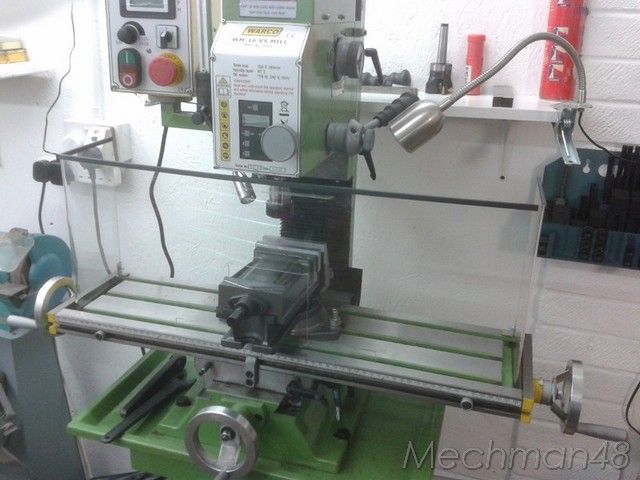I removed the chuck guard on my mini-lathe after experience suggested it did nothing but get in the way. About a year later a ball of swarf caught in the jaws and was flung into my face hard enough to draw blood just under my left eye. Would have been a painful visit to A&E had I not been wearing glasses, and this from a small machine!
When I upgraded to a bigger lathe I left the chuck guard in place. Normally it does nothing, but it stopped metal flying when a 'should have used a centre' job cammed out of the chuck at high-speed. (I knew it was risky, but I was in a hurry. Stupidity causes accidents.)
The anatomy of accidents is interesting. They tend to happen most to untrained youngsters and experienced men who've become careless. Carelessness can be due to habit, but being emotionally upset, ill, drunk, tired or rushed is more common. Bravado, horse-play, laziness and unwise short-cuts are all hazardous. Experienced workers tend to be caught out more than youngsters by the unexpected. As they 'know' there isn't going to be a problem, they may react too slowly when something unusual happens.
Having been involved in the costly aftermath of workplace accidents I'm unsympathetic to chaps with a bad attitude to H&S. They tend to see accidents narrowly in terms of personal risk (usually low) whilst being oblivious to wider impacts : a fatality costs £2 or £3M and even a minor incident can cost several thousands. The days when an employer had no liability and only had to send the mangled remains home on a hand-cart have long gone! It's easy to be gung-ho about risk when you don't have to sort out disrupted delivery, damage, upset relatives, managers and team mates, unions, HSE Inspectors, policemen, expensive legal advice, claims, prosecutions, court cases, and revision of Risk Assessments and Training Plans etc etc.
Keeping it in perspective though, hobby lathes, milling machines and band-saws are safe compared with pillar drills, hand power tools, and table saws. I put it down to the need for metal and cutting tools to be clamped firmly during cutting, whereas wood is more likely to be hand-held. Pillar Drilling sheet metal is perhaps the most dangerous operation in my workshop: it's so tempting to hand-hold work while pillar drilling, even though I know the drill is likely to snatch.
As hobbies go, Model Engineering is mostly safe. Horse riding, motorbikes, scuba diving and many other activities take a worse toll. My other hobby – Amateur Radio – is far more dangerous than home metalwork. Electric shock is relatively rare, but erecting aerials involves ladders, climbing trees, scrambling on roof-tops, towers, plus lifting and fitting awkward weights high above ground. Once in a blue-moon it goes wrong. Even gentlemanly Microscopy can be iffy: although the vast majority of bacteria are harmless, I live in an Anthrax area…
I don't see much advantage in deliberately disabling safety features. They're only there because some poor sod got hurt in the past.
Dave
J Hancock.





